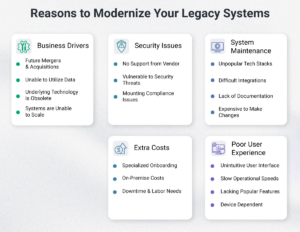
ESG Full Form : ESG stands for Environmental, Social, and Governance.
ESG criteria are now becoming essential considerations in banking and financial sector.
Though ESG started as a socially conscious investment strategy in the 1960s, it gained attention in 2020 at Davos.
The International Business Council (IBC) and the World Economic Forum (WEF) spearheaded an initiative to develop a set of uniform metrics to structure how businesses report on their environmental, social, and governance (ESG) performance.
What is ESG:
The set of standards used to assess an investment’s and business decision’s ethical and sustainable implications is known as ESG considerations.
Here is a summary of every component.
- Environmental: Environmental variables encompass several aspects of the environment, such as waste management, water use, energy use, carbon emissions, and conservation of natural resources.
- Social: The term “social factors” refers to aspects of society that have an impact, such as community involvement, consumer happiness, diversity and inclusion, employee safety, and health and human rights.
- Governance: A company’s governance policies and structure, such as executive compensation, board composition, data security, transparency, accountability, and compliance, are all influenced by governance.
Governments and regulatory agencies worldwide are pushing an ESG revolution in the corporate sector with extreme haste to address this dilemma.
One of the most significant moves in this direction was the 2015 signing of the Paris Climate Agreement, which made it legally mandatory for 196 countries to take measures to slow down climate change. Financial institutions are under immense pressure to fulfill their role as stewards of the world’s economy.
ESG framework for Banks:
Banks have a unique chance to use lending and investing to contribute significantly to sustainable development.
Banks can take these steps to help other stakeholders follow ESG.
1. Environment
a. Allocating Funds to Sustainable Projects: The value of green bonds issued worldwide has increased dramatically in the last few years. In 2014, green bonds worth 37 billion U.S. were issued. In 2021, this figure peaked at approximately 582 billion U.S. dollars and decreased slightly in 2022, when green bonds issued amounted to 487 billion U.S. dollars.
As per one update, Climate Bonds Initiative has revealed that Green Social, Sustainability, Sustainability-Linked, and Transition (GSS+) finance volumes crossed the $ 4 trillion mark in H1 2023.
Financial institutions may support a variety of industries, from sustainable agriculture to renewable energy, by supporting projects that have a positive environmental impact.
b. Carbon Offsets:
As per one report, in 2022, the global carbon credit market traded value was approximately US$978. This carbon credit market is expected to reach US$2.68 trillion by 2028, implying a CAGR of 18.23% from 2023 to 2028. There is increasing regulatory and stakeholder pressure on global corporations to lower emissions.
Financial institutions can facilitate the development of a more carbon-neutral economy by providing tools that allow enterprises to offset their emissions.
2. Social: Money from these bonds is used to finance projects that address various social problems, such as healthcare, education, affordable housing, poverty alleviation, and environmental sustainability.
The number of social bonds listed on the world markets in Q3 2022 reached 1,239, which represents an 8.4% increase on Q2 2022 (QoQ) and 43.2% increase on Q3 2021 (YoY)
These financial tools directly support initiatives with positive social effects, such as education and healthcare.
Microfinance : According to data from the World Bank, 1.7 billion adults worldwide are still unbanked. The finance industry may guarantee underprivileged groups’ access to capital, promoting entrepreneurship and raising living conditions by endorsing microfinance firms.
3. Governance:
a. Promoting Ethical Business Conduct Open Reporting: Nearly all S&P 500 businesses (2022) had sustainability reports, according to a poll. Financial institutions can keep firms accountable by favoring investments in companies that follow transparent ESG reporting.
b. Executive Salary: Approximately 50% of Fortune 100 businesses now link CEO salaries to ESG criteria, according to a report. Banks may sway this trend by supporting companies that tie executive compensation to environmental, social, and governance (ESG) success.
How Bank can play a more significant role in ESG
Banks worldwide can quickly and readily address two main areas of ESG impact.
First, incorporating ESG objectives and standards within the Bank’s standards.
Second, how the Bank incorporates its awareness of ESG issues into its lending practices and educates borrowers to focus on these issues more.
Banks can access a range of income sources that are motivated by ESG values.
One way is to rate and evaluate clients according to their ESG performance to determine if they qualify for green incentives and financing. To promote carbon neutrality, banks also help clients who produce carbon connect with those who offset it.
To help customers measure, track, and manage their emissions, new products, including carbon calculators, integrated emission statements, and carbon offset deposits, could be developed.
The absence of incentives and strict restrictions to implement ESG practices, along with banks’ ignorance of the significance of ESG, are the leading causes of several problems in ESG reporting and tracking.
There are many opportunities for banks to make an effect at both levels now, given the state of most banks’ ESG-led thinking.
According to a 2021 CDP analysis, banks’ emissions are very low compared to the emissions they finance.
Up to 700 times the Bank’s emission footprint may be accounted for by emissions supported by the Bank.
This figure highlights how important it is for banks to examine and enhance their ESG procedures while also paying close attention to the more significant impactful areas.
Banks can make a significant impact by providing better loans and incentives to sustainable enterprises.
Banks can take these steps to improve their ESG score.
1. Regarding the environment, banks may reduce emissions significantly by becoming paperless, embracing real-time, straight-through payment processing, moving activities to the cloud, and going beyond branch banking.
2. Regarding social impact, banks could use ecosystem connectivity driven by APIs to improve financial inclusion, facilitate quicker and easier lending, and quickly create innovative products for socially diverse populations.
3. From a governance standpoint, banks should use Blockchain technology and advanced analytics to deliver more security, better reporting, and transparency to banking operations in an increasingly open and hybrid ecosystem.
The ESG consequences of banks’ business practices are currently of concern to several stakeholders, including regulatory organizations, government entities, watchdogs, rating agencies, and special interest groups.
Let’s examine a few exemplary cases to highlight how this industry is uniquely positioned to initiate and facilitate significant change.
ESG in Banking Examples
What is ESG Investing: This contains 2 parts. Investment through Green Bonds and Impact Investing.
1. Green Bonds and Sustable Finance: In 2007, the European Investment Bank released the first green bond, designating money for projects addressing climate change and environmental protection. From 2007 onwards, the green bond market has expanded rapidly worldwide, with issuances reaching hundreds of billions annually.
2. Impact investment: In 2015, Goldman Sachs acquired Imprint Capital Advisors, a small firm that advises clients on environmental/social/governance (ESG) and impact investments.
With this change, the company can now invest in businesses and initiatives that provide both a financial return and a demonstrable, positive social or environmental benefit.
3. Shareholder Activism for Environmental Causes: By winning at least two board seats at ExxonMobil’s 2021 annual shareholder meeting, shareholders led by Engine No. 1 (an impact-investment hedge fund) scored a big victory.
They aimed to move the organization toward a more environmentally friendly and sustainable business strategy.
4. Sustainable Banking and Loans: To support projects that positively impact the environment, HSBC has aligned its Green Loan offering to the Loan Market Association’s Green Loan Principles, which aim to create market standards and guidelines. It provides a consistent methodology for use across the green loan market.
5. Including ESG in Credit Ratings: In recognition of the fact that ESG considerations can materially affect a company’s financial standing and prospects for the future, S&P Global Ratings has begun to include ESG considerations in its credit ratings.
6. ESG Education and Training: To provide financial professionals with the information and resources they need to include ESG factors in their investment analyses and decisions, the CFA Institute has begun to offer additional ESG-related materials and training.
7. ESG Reporting and Transparency: Key participants in the ESG field now include the GRI (Global Reporting Initiative) and the SASB (Sustainability Accounting Standards Board). Investors can now make better selections since financial companies have adopted frameworks for reporting on their sustainability performance.
The above examples show that the financial industry is actively involved in the ESG process. It’s a powerful actor with the power to either hasten or slow down the world’s shift to more egalitarian and sustainable practices. The industry’s campaign for ESG can bring about revolutionary change in various sectors and society.
Why is ESG important for Banks.
Growing pressure on many fronts has led to increased scrutiny and a focus on compliance and reporting.
The most recent sustainability standards that the EU has enacted represent a significant turning point and a sign of things to come for global ESG regulation.
If the sustainability legislation enacted by the EU is any indication of what is to come, banks worldwide will be obliged to monitor and report on the ESG status of their corporate clients in addition to being responsible for their own ESG footprint and impact.
In addition, banks will have to distance themselves from companies that do not adhere to environmental standards while expanding their ESG-focused lending. Banks will find themselves carrying more and more ESG-led risks on their books as lenders.
It will be essential to measure and rate these risks in an organized way in order to control them. However, ESG’s measurement, assessment, and rating systems are still in their infancy, much like most other things.
Although a pressing need exists to incentivize ESG-focused actions and quantify ESG risks, a strong, internationally defined, and trustworthy measuring system is still being developed.
At this point in the process, banks have the chance to generate new revenue in the long run by measuring and assessing the borrower’s ESG performance and ESG risks.
They are in an excellent position to develop new products and services that can help their clients in identifying, measuring, and addressing their ESG shortfalls through carbon calculators, built-in emission statements, and carbon offset deposits, to name a few, because they hold a (typically) diverse portfolio of client relationships.
Amid the growing consciousness regarding climate change, social justice, and corporate accountability, the financial industry is uniquely positioned to propel significant transformation in the ESG domain.
Difficulties in Integrating ESG and the Future Direction
Though incorporating Environmental, Social, and Governance considerations into the financial domain provides a novel approach to ethical investing and corporate governance, there are certain challenges.
- Data Ambiguity and Inconsistency: One of the biggest obstacles to ESG reporting is the need for a standardized, widely recognized methodology. Organizations and institutions frequently use disparate metrics, which causes data inconsistencies and an unclear environment. Comparing the ESG performances of different companies becomes more accessible with a standard. Global programs like the Global Reporting Initiative come into play in this situation.
These projects seek to unify ESG data and give stakeholders clear, comparative insights by developing a set of standards and measurements that are widely understood.
2. The Conflict Between Short-Term and Long-Term Objectives: The financial industry has often strongly emphasized quarterly performance and has become obsessed with short-term gains. The long-term, sustainable goals that ESG advocates may conflict with this innate short-termism. A problem occurs when short-term profitability can be attained at the price of long-term sustainability.
Nevertheless, research reveals a different and intriguing trend.
Companies who turned their focus to long-term sustainability and responsibility saw increases in earnings, revenue growth, and considerable returns on investment in addition to improving the environment.
This pattern demonstrates that accountability and profitability don’t have to conflict with one another.
3. Closing the Skill Gap: As ESG becomes more important in the financial world, there is an increasing need for individuals with the knowledge, skills, and abilities to comprehend, evaluate, and incorporate these aspects. The pool of available skills, though, isn’t sufficient.
This discrepancy was captured in a poll. Only 25% of its members thought they possessed the necessary abilities to properly integrate ESG elements into their investing plans, even though the bulk of them—roughly 85%—recognized their significance.
This discrepancy emphasizes how urgently ESG-focused training and education materials are needed. The banking industry may lead the way in a more knowledgeable and efficient ESG integration by providing personnel with the necessary resources and training.
The Way Ahead for ESG
Cooperation, education, and innovation will be the cornerstones of development as the financial sector wrestles with these issues.
The sector may successfully manage the challenges of ESG integration by promoting collaborations, implementing common reporting standards, and reiterating its emphasis on training.
The financial industry can be vital in advancing the environmental, social, and governance (ESG) agenda.
Banks can significantly influence the development of a profitable, sustainable, and equitable future by directing funds toward sustainable projects, encouraging socially responsible investments, and providing incentives for ethical corporate behavior.
In summary, the financial sector’s commitment to ESG isn’t merely a fad; it’s quickly becoming an essential component of conscientious and progressive financial management.
- SEO Powered Content & PR Distribution. Get Amplified Today.
- PlatoData.Network Vertical Generative Ai. Empower Yourself. Access Here.
- PlatoAiStream. Web3 Intelligence. Knowledge Amplified. Access Here.
- PlatoESG. Carbon, CleanTech, Energy, Environment, Solar, Waste Management. Access Here.
- PlatoHealth. Biotech and Clinical Trials Intelligence. Access Here.
- Source: https://www.finextra.com/blogposting/25389/what-is-esg-in-banking?utm_medium=rssfinextra&utm_source=finextrablogs
- :has
- :is
- :not
- ][p
- 1
- 100
- 2%
- 2014
- 2015
- 2020
- 2021
- 2022
- 2023
- 2028
- 43
- 500
- 7
- 700
- 8
- a
- abilities
- About
- above
- access
- accessible
- According
- accountability
- accountable
- accounted
- Accounting
- acquired
- across
- actions
- actively
- Activism
- activities
- addition
- Additional
- address
- addressing
- adhere
- adopted
- adults
- advanced
- advancing
- advisors
- advocates
- affect
- affordable
- affordable housing
- agencies
- agenda
- Agreement
- agriculture
- ahead
- aim
- aimed
- aligned
- All
- allow
- along
- also
- Ambiguity
- an
- Analyses
- analysis
- analytics
- and
- and governance (ESG)
- annual
- Annually
- Another
- any
- APIs
- approach
- approximately
- ARE
- areas
- AS
- aspects
- assess
- Assessing
- assessment
- Association
- At
- attained
- attention
- available
- awareness
- Bank
- Banking
- banking industry
- Banks
- BE
- because
- become
- becomes
- becoming
- begun
- behavior
- being
- benefit
- Better
- between
- Beyond
- Big
- Biggest
- Billion
- billions
- blockchain
- blockchain technology
- board
- bond
- bond market
- Bonds
- Books
- borrower
- borrowers
- both
- Branch
- bring
- built-in
- business
- business practices
- business strategy
- businesses
- by
- cagr
- Campaign
- CAN
- capital
- captured
- carbon
- carbon emissions
- Carbon Neutrality
- Carbon Offsets
- Carbon-neutral
- carrying
- cases
- causes
- ceo
- certain
- cfa
- challenges
- Chance
- change
- clear
- client
- clients
- Climate
- Climate change
- Close
- closing
- Cloud
- collaborations
- come
- commitment
- Common
- community
- Companies
- company
- compared
- comparing
- Compensation
- compliance
- component
- composition
- comprehend
- Concern
- conditions
- Conduct
- conflict
- Connect
- Connectivity
- conscious
- Consciousness
- Consequences
- CONSERVATION
- considerable
- considerations
- consistent
- consumer
- contains
- contribute
- control
- cornerstones
- Corporate
- Corporations
- could
- Council
- countries
- create
- credit
- criteria
- Crossed
- Currently
- Customers
- data
- data security
- davos
- decision
- decisions
- decreased
- defined
- deliver
- demonstrates
- deposits
- Determine
- develop
- developed
- developing
- Development
- different
- directing
- direction
- directly
- discrepancy
- disparate
- distance
- diverse
- Diversity
- Diversity and inclusion
- do
- dollars
- domain
- don
- down
- dramatically
- driven
- Earnings
- easier
- Economic
- Economic Forum
- economy
- ecosystem
- Education
- effect
- effects
- efficient
- either
- elements
- embracing
- emission
- Emissions
- emphasis
- emphasized
- emphasizes
- Employee
- encompass
- encouraging
- Endorsing
- energy
- energy use
- Engine
- enhance
- enterprises
- entities
- entrepreneurship
- Environment
- environmental
- Environmental Sustainability
- environmentally
- environmentally friendly
- equitable
- ESG
- ESG Investing
- essential
- ethical
- Ethical Business
- EU
- European
- evaluate
- Even
- Every
- examine
- examples
- excellent
- executive
- exists
- expanded
- expanding
- expected
- extreme
- exxonmobil
- facilitate
- fact
- factors
- few
- field
- Figure
- finance
- financial
- financial inclusion
- Financial institutions
- Financial sector
- financing
- Find
- Finextra
- Firm
- firms
- First
- Focus
- follow
- Footprint
- For
- form
- Fortune
- Forum
- Framework
- frameworks
- frequently
- friendly
- from
- Fulfill
- full
- fund
- funds
- future
- gained
- Gains
- gap
- generate
- Give
- given
- Global
- Goals
- going
- goldman
- Goldman Sachs
- governance
- Government
- Government Entities
- Green
- Group’s
- Growing
- Growth
- guarantee
- guidelines
- had
- Have
- Health
- healthcare
- hedge
- hedge fund
- help
- Highlight
- highlights
- hold
- housing
- How
- However
- HSBC
- HTTPS
- human
- human rights
- Hundreds
- Hybrid
- IBC
- identifying
- if
- Ignorance
- immense
- Impact
- Impact Investing
- impactful
- implement
- implementing
- implications
- important
- improve
- improving
- in
- Incentives
- incentivize
- include
- Including
- inclusion
- Income
- inconsistencies
- incorporate
- incorporates
- incorporating
- Increase
- increased
- Increases
- increasing
- increasingly
- indication
- individuals
- industries
- industry
- influence
- influenced
- information
- initiate
- Initiative
- initiatives
- innate
- Innovation
- innovative
- insights
- Institute
- institutions
- integrate
- integrated
- Integrating
- integration
- interest
- International
- international business
- internationally
- into
- intriguing
- Invest
- investing
- investment
- Investment strategy
- Investments
- Investors
- involved
- involvement
- isn
- Issued
- issues
- IT
- ITS
- jpg
- Justice
- Keep
- Key
- knowledge
- known
- Last
- lead
- leading
- least
- Led
- legally
- Legislation
- lenders
- lending
- levels
- like
- LINK
- Listed
- living
- loan
- Loans
- Long
- long-term
- Low
- lower
- made
- Main
- make
- manage
- management
- mandatory
- many
- mark
- Market
- Markets
- materially
- materials
- May..
- measure
- measurement
- measurements
- measures
- measuring
- meeting
- Members
- merely
- Methodology
- Metrics
- Microfinance
- money
- Monitor
- more
- most
- motivated
- move
- moves
- moving
- much
- name
- Natural
- nearly
- necessary
- Need
- needed
- neutrality
- New
- new products
- no
- novel
- now
- number
- objectives
- obliged
- obstacles
- of
- offer
- offering
- offset
- offsets
- often
- on
- ONE
- only
- onwards
- open
- Operations
- opportunities
- or
- order
- organization
- organizations
- Organized
- Other
- own
- paris
- participants
- parts
- Pattern
- paying
- payment
- payment processing
- per
- performance
- performances
- Personnel
- plans
- plato
- Plato Data Intelligence
- PlatoData
- Play
- Point
- policies
- poll
- pool
- populations
- portfolio
- position
- positioned
- positive
- positively
- Poverty
- Poverty Alleviation
- power
- powerful
- practices
- pressing
- pressure
- price
- principles
- Problem
- problems
- procedures
- process
- processing
- produce
- Products
- professionals
- profitability
- profitable
- Programs
- progressive
- projects
- promote
- promoting
- Propel
- properly
- prospects
- protection
- provide
- provides
- providing
- Pushing
- Q2
- Q2 2022
- Q3
- Q3 2021
- q3 2022
- qualify
- quicker
- quickly
- raising
- range
- rapidly
- Rate
- rating
- Rating agencies
- ratings
- reach
- reached
- reaching
- readily
- real-time
- recent
- recognition
- recognized
- reduce
- refers
- regarding
- Regulation
- regulatory
- reiterating
- Relationships
- released
- Renewable
- renewable energy
- report
- Reporting
- Reports
- represent
- represents
- research
- Resources
- responsibility
- responsible
- restrictions
- return
- returns
- Returns on Investment
- Revealed
- Reveals
- revenue
- revenue growth
- Revolution
- revolutionary
- rights
- risks
- Role
- Run
- s
- S&P
- S&P 500
- S&P Global
- Sachs
- Safety
- salaries
- salary
- saw
- score
- scrutiny
- sector
- Sectors
- security
- Seek
- Services
- set
- several
- shareholder
- Shareholders
- shift
- short-term
- should
- show
- sign
- significance
- significant
- significantly
- signing
- since
- situation
- skill
- skills
- slow
- small
- Social
- Social impact
- social justice
- socially
- Society
- Sources
- spearheaded
- special
- stakeholder
- stakeholders
- standard
- standards
- standing
- standpoint
- stands
- started
- State
- statements
- Status
- Steps
- Still
- Strategy
- Strict
- strong
- strongly
- structure
- success
- Successfully
- such
- sufficient
- SUMMARY
- support
- Supported
- Supporting
- Sustainability
- sustainable
- Sustainable Development
- Sway
- system
- Systems
- Take
- Technology
- term
- that
- The
- The Future
- the information
- The State
- the world
- their
- Them
- themselves
- There.
- These
- they
- things
- Thinking
- this
- those
- though?
- thought
- Through
- TIE
- times
- to
- tools
- toward
- track
- Tracking
- traded
- Training
- Transformation
- transition
- Transparency
- transparent
- Trend
- Trillion
- trustworthy
- Turned
- Turning
- turning point
- two
- typically
- u.s.
- U.S. Dollars
- unbanked
- under
- underprivileged
- understood
- unique
- uniquely
- Update
- use
- used
- value
- Values
- variety
- various
- very
- victory
- vital
- volumes
- was
- Waste
- Water
- Way..
- WEF
- were
- What
- What is
- when
- which
- while
- WHO
- widely
- will
- winning
- with
- within
- world
- World Bank
- World Economic Forum
- worldwide
- worth
- years
- zephyrnet













